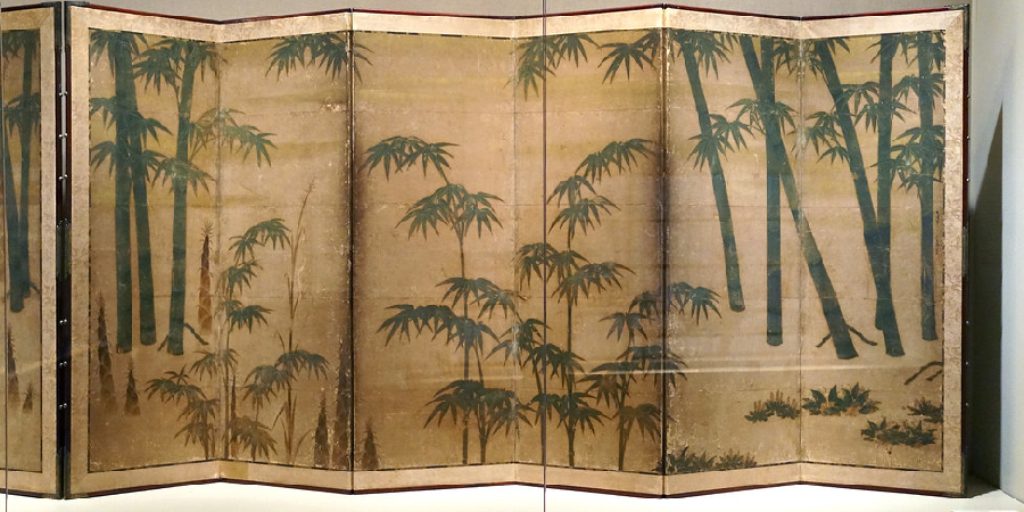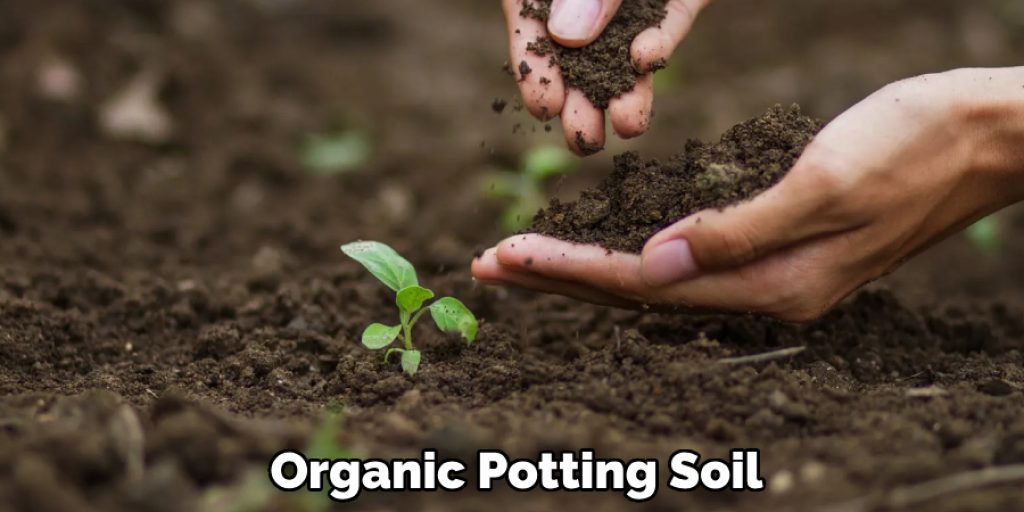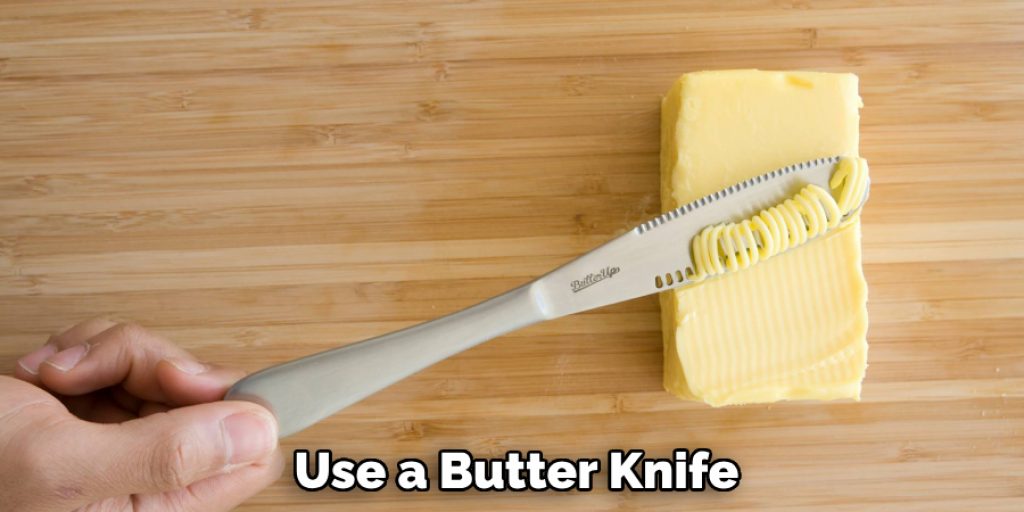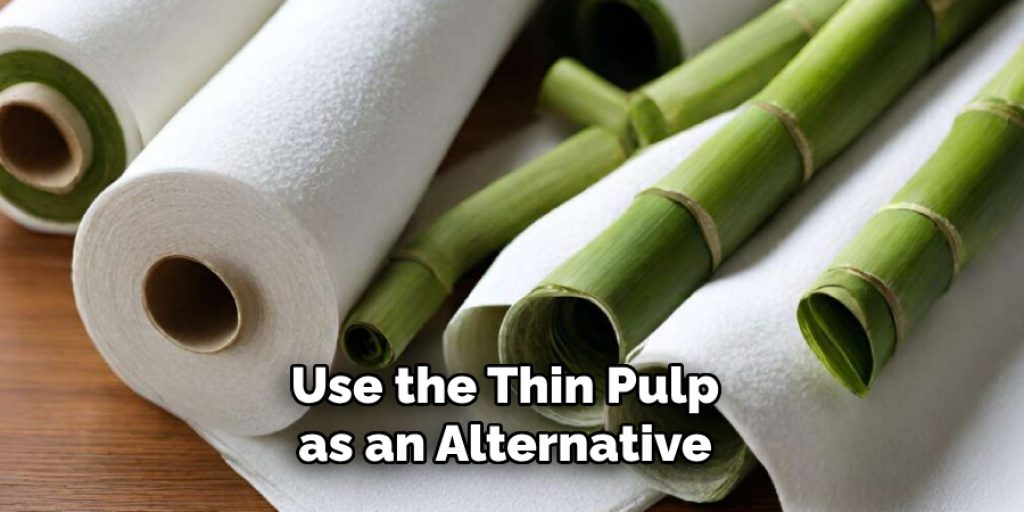How to Make Bamboo Paper
Bamboo paper is a great alternative to regular paper because it is made from an organic, sustainable resource. Bamboo grows much faster than trees and produces the same amount of cellulose as wood pulp. It also has higher tensile strength and can be used for many purposes beyond printing text on a page. In addition, it’s durable, versatile, and environmentally friendly.

To learn how to make bamboo paper on your own at home, all you need is some fresh bamboo leaves that have been soaked in water overnight so they will remain pliable enough to work with. Remove the hard stem from each leaf by cutting along its spine with scissors or a sharp knife. The wood from the bamboo stalk can be used to create paper, furniture, and other products. Creating your own paper with bamboo is easy as well as fun! So, let’s go through this blog post to dive into it.
What is a Bamboo Paper?
Bamboo paper is made from the pulp of bamboo. Bamboo has been used around the world for various purposes, including making food and weapons. In addition, the pulp of bamboo can be used to make various things, such as paper, cloth, and building materials. Pulp from different plants yields different types of paper, and bamboo paper is typically made from giant timber bamboo.
You may be wondering why bamboo is being used to make paper. There are several reasons for this, the most important one being its sustainability. Bamboo grows rapidly and can be harvested in just a few years compared to trees that take decades to grow. It also requires significantly less water and pesticides to grow, making it an environmentally friendly option.
You can find bamboo paper in a variety of products such as notebooks, journals, and even toilet paper. It has a similar look and feel to regular paper, with the added benefits of being eco-friendly.
Sources of Bamboo
Most bamboo paper is made from the pulp of giant timber bamboo. Giant timber bamboo is native to Asia, including China, Korea, and Japan. If you are in an Asian area with a bamboo forest growing these types of bamboo, you can gather pulp from the stalks. The more common types of bamboo found in gardens and yards are not good sources for giant timber bamboo pulp.
The best source of bamboo would be a local nursery or garden center. They may have giant timber bamboo available for purchase or can order it for you. If you cannot find any locally, there are also many online retailers that sell giant timber bamboo, and they can easily ship it to your doorstep.

It’s important to make sure that the bamboo you use for papermaking is sustainably sourced. Do your research and choose a certified sustainable source, as bamboo forests are vital habitats for many animals and support local economies.
What Are the Uses of Bamboo Paper?
Bamboo paper is a type of alternative to tree-based paper. Because it is made of pulp, the strength and thickness can be changed depending on how much bamboo material is used; high-strength bamboo pulp can make bulletproof paper. In addition, the bamboo paper has an unusual texture that makes it suitable for some purposes. Still, generally, it is not as strong as paper made from cloth and has a lower resistance to water than tree-based paper.
You can use bamboo paper to create a variety of products, such as notebooks, journals, and books. It’s also a great option for printing documents, creating artwork, or even making furniture. Bamboo paper can be recycled into new paper, reducing waste and preserving resources.
But the uses of bamboo paper don’t stop there. It can also be used for packaging materials, such as bags, boxes, and wrapping paper. The durability and flexibility of bamboo make it a popular choice for these purposes.
Materials and Supplies Needed:
Bamboo Frame:
The frame is made up of two wooden dowels, one that’s 18.5 inches long and the other 17 inches long.
Scew Eyes:
You will need four screw eyes to attach the wooden dowels to the frame.
Wire:
Thin wire or string can be used to secure the paper pulp to the frame.
Paper Pulp:
You can either buy pre-made bamboo paper pulp or make your own by blending bamboo leaves and water in a blender.
Tarp:
A tarp or plastic sheet should be placed under the frame to catch any excess water or pulp.
Sponge:
To help remove excess water from the paper pulp.
Step-by-Step Guide: How to Make Bamboo Paper
Step 1: Remove the Green Skin
Plant the bamboo in a planter box filled with soil when you are ready to start making paper. The container should be about three inches deep and at least 12 inches wide. Fill the container with organic potting soil that is enriched with peat moss or coconut coir fiber. This will provide optimal conditions for your bamboo plant while you are making paper. After your bamboo plant grows to about six inches tall, you can start making paper.

Take the backside of a kitchen knife and cut off the green epidermis from any other layer. If you are planning to make an all-white paper, you can use the green skin of bamboo. It will give your paper a light tan color.
Step 2: Use Inner Pulp
The stalk of your young bamboo plant will likely be easy to peel. You can use the inner pulp to make a range of items, from paper to clothing and crafts. First, cut through the outer wall at one end of the stalk with a knife. Then, cut away strips in a downward motion along the exterior of the stalk. As you peel off the exterior, small sections of the inner wall should come away. Try to take a thin layer from the interior of your bamboo plant.
The inner pulp of the bamboo stalk will be used to make paper. Cut it into small pieces and place it in a blender with some water. Blend until you have a smooth, homogenous mixture.
Step 3: Separate Inner Pulp
Use a knife to separate the pulp from other parts of your bamboo stalk. The pulp is a fibrous material that will be much easier to remove from other components, such as the exterior and core of the stalk. Start at the top of your harvested bamboo plant and work down to separate each component. If you are using your pulp for crafts, you may need to use a butter knife or another type of flat utensil to help scrape away stubborn spots.

The pulp fibers will look somewhat similar to paper. It may be light brown, tan, or greenish in hue. Once you have a pile of fibers separated from the rest of the stalk material, you are ready to start making paper.
Step 4: Use Your Hands
As you separate the various parts of your plant, use your hands to pull away from the pulp. This is where it will be easiest to remove the unwanted sections. Of course, you can always wash your hands with water and dish soap if needed.
You can also use your hands to press the pulp into paper. Gather a handful of fibers and place them on a flat surface. Then, press them down with both hands to create a sheet-like shape. The pulp should start to stick together due to its natural fibers.
Step 5: Dry and Polish
Lay your separated pulp on a drying rack and let it dry for 24 to 48 hours. You can place the rack anywhere you want. If you do not have a rack, consider using bamboo skewers or sticks to hold up the smaller pulp strips. Letting them air-dry helps prevent mold from forming, but it also makes it easier to separate.
It’s important to note that if you are making paper from bamboo, the pulp can be very light and fluffy. If it falls off while drying, don’t worry – it will still form a sheet of paper as it dries.
Once your paper is dry, you can polish it by ironing it with a waxed cloth or using a rolling pin.
Step 6: Sizing the Pulp
After your pulp is dry, you can apply sizing to prepare it for paper-making. Water-based adhesive sizes work best because they are non-toxic and do not make the paper tacky. One way to apply to size is by brushing or spraying on a thin layer. Another option is to soak your dried pulp in a bath of adhesive. Any method you choose should leave your pulp looking glossy and smooth, which helps it form a good bond with paper fibers.
You can also try adding shredded paper for extra strength and texture. It’s important to experiment with different pulp materials, sizing methods, and additive materials to see what works best for your paper-making process.
Step 7: Fixing and Grinding
Bamboo paper can be made from either fresh or aged pulp. If you use fresh plant material, add a small alum to your pulp to help it stick together and form a smoother sheet. Crushed limestone is another option if you want to make better-quality white pulp. To find out how much of your additive to use, mix the ground material with a small amount of water. Spread the mixture on a glass pane to see if it is evenly distributed. If you are satisfied with the results, move on to making your paper!

The bamboo paper-making process starts by soaking the pulp in water. After your plant material is soaked, you can either hand-grind or use a blender to grind it into a fine paste. The goal is to break down the fibers so they will form a smooth sheet of paper.
Step 8: Remove Excess Water
To help your pulp create a flat surface, remove the excess water. Place a screen over a pan and pour in some of your wet pulp. Gently scrape across the top with a tool to flatten it out. Over time, you will be able to add small amounts of pulp to make paper sheets. If any parts remain wrinkled, scrape away excess pulp to make the surface flat again.
It can take several hours for your pulp to dry completely. Make sure to check it periodically and remove any excess water that may be pooling on top. But be careful not to remove too much pulp, as this can cause your paper to become thin and brittle. You want a nice, thick sheet of bamboo paper that will hold up to use.
Step 9: Making Bamboo Paper
Bamboo paper is made just like regular pulp-based or plant-based paper. You can use a blender or rolling pin to form the pulp into sheets. If you are using plant material, remember that it will dry more quickly than traditional paper. You can choose whether to use fresh or dried pulp based on your preference and available materials. The dried version tends to be rougher but has a longer shelf life. You can experiment with additives and different papermaking techniques to create a variety of papers.

You can also use bamboo paper for different purposes, such as writing, drawing, or creating crafts. Its durability and unique texture make it a great option for various projects. So the next time you come across some bamboo, consider trying your hand at making your own paper – it’s a fun and environmentally-friendly activity!
Step 10: Enjoy!
You now have a simple way to recycle your bamboo plants into sheets of paper! Use your new supplies to make gifts, cards, or other crafts. You can also use the thin pulp as an alternative for edible seaweed wrap-around sushi rolls. Enjoy your new paper and tell us how it turned out in the comments section below.

Following this step-by-step guide on how to make bamboo paper, you can easily create your own bamboo paper at home using just a few materials and supplies. Remember to be patient and experiment with different methods and additives to find the perfect technique for you. Whether it’s for crafts or practical use, bamboo paper is a great alternative to traditional tree-based paper and provides a sustainable option for paper-making.
6 Benefits of Using the Bamboo Paper:
1. Material: Bamboo leaves and stems tempered with calcium carbonate and sodium hydroxide to remove impurities.
2. Chemical Composition: Fiber content varies depending on the species of bamboo used. The lignin and hemicelluloses account for 70% of the solid matter.
3. Effect of Bamboo on the Environment: Bamboo is very high in cellulose, making it a viable alternative to wood pulp for papermaking. This has major environmental benefits since using bamboo as an energy source (for producing heat or electricity) would reduce greenhouse gas emissions by about 15% compared to coal.
4. Paper Properties: Bamboo Paper is strong and durable, and its water resistance makes it suitable for interior uses.
5. Colour & Texture of the Bamboo Paper: The lighter colors are achieved by using slightly bleached bamboo, while greyer tones are obtained through unbleached raw materials. These papers have a warm feel since the bleaching process brings out the lignin that lies at a deeper level.
6. Availability: In limited quantities. Bamboo Paper is primarily used for handmade crafts, such as lampshades, stationery items, and other decorations.
What Kind of Bamboo Is Used for Paper?
Paper can be made from the bamboo plant, a wonderfully fast-growing grass that looks elegant in backyards or on hillsides. There are over 1600 species of bamboo plants that grow natively in diverse climates worldwide, mainly in Asia and Central America. There are many types of bamboo plants with different heights and hardiness levels.

Generally speaking, any bamboo plant can create paper, but some species are better than others. The Phyllostachys genus of bamboo is most commonly used for paper making. This type of bamboo is very hardy and grows rapidly, creating a thick stalk that holds up well to the beating process during paper production. Not only that, but it is easier to extract the pulp from these thicker stalks.
Conclusion:
Bamboo paper is a great option for those who want to go green. You can make your own bamboo paper in less than an hour using the instructions on our website, and it will be ready when you are! There’s no need to buy expensive supplies or spend hours at the craft store trying to find just what you need; everything you’ll need can be found with some basic tools like scissors, watercolor paintbrushes, toothpicks, and spoons.
It’s a sustainable alternative to traditional papers, and it has unique qualities like being translucent, waterproof, durable, and lightweight. The material is also easy to recycle, which makes this eco-friendly product even more appealing! We hope this article has inspired you on how to make bamboo paper and take up one of these hobbies yourself!
You Can Check It Out to Make Banana Paper
You Can Check It Out to Repot Lucky Bamboo Plant in Rocks




